site search
online catalog
IDENTIFIED 12th NEW YORK STATE MILITIA UNIFORM: THREE MONTHS SERVICE APRIL TO AUGUST 1861: SKIRMISHES AT MARTINSBURG AND BUNKER’S HILL
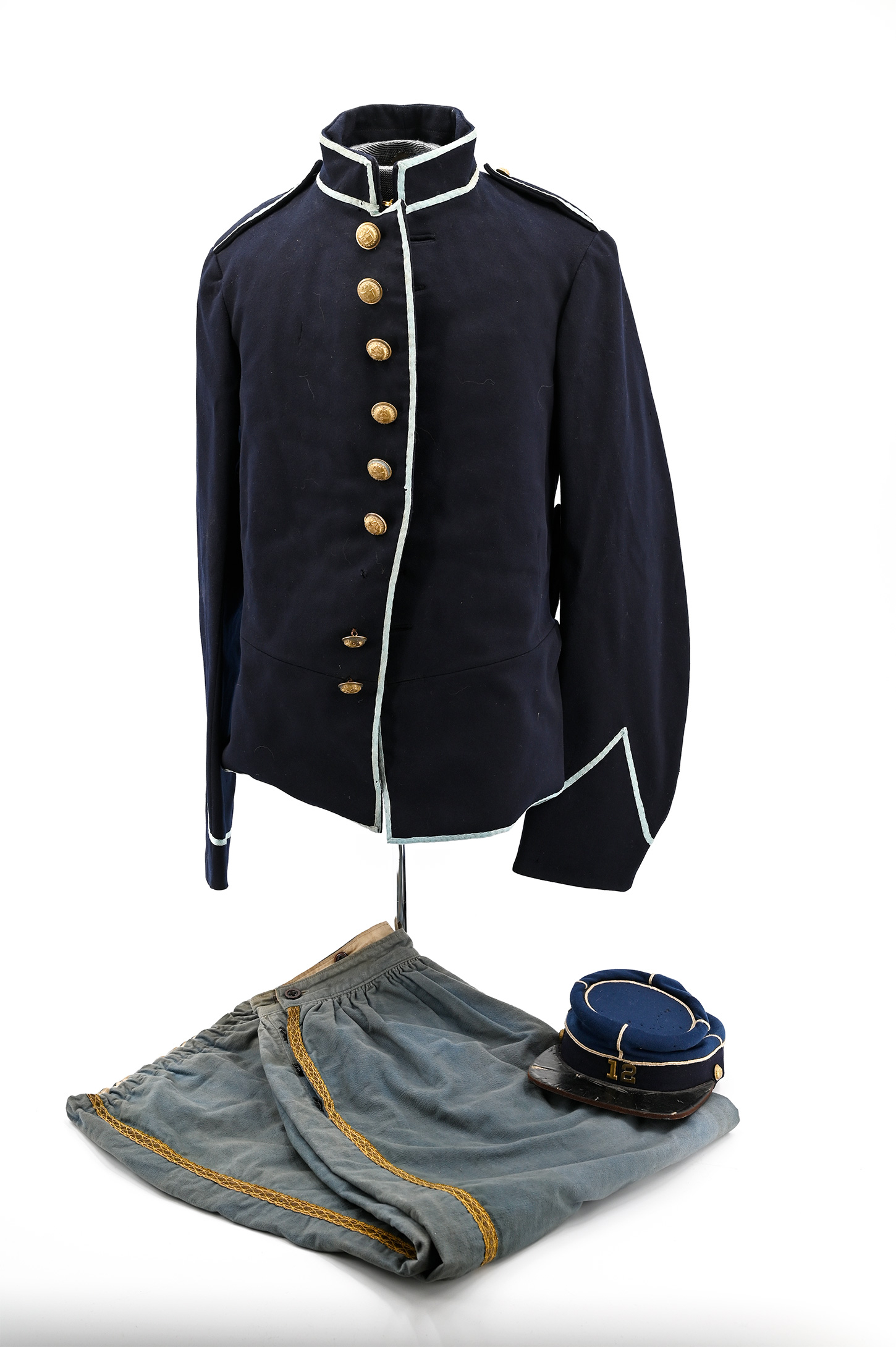
Hover to zoom

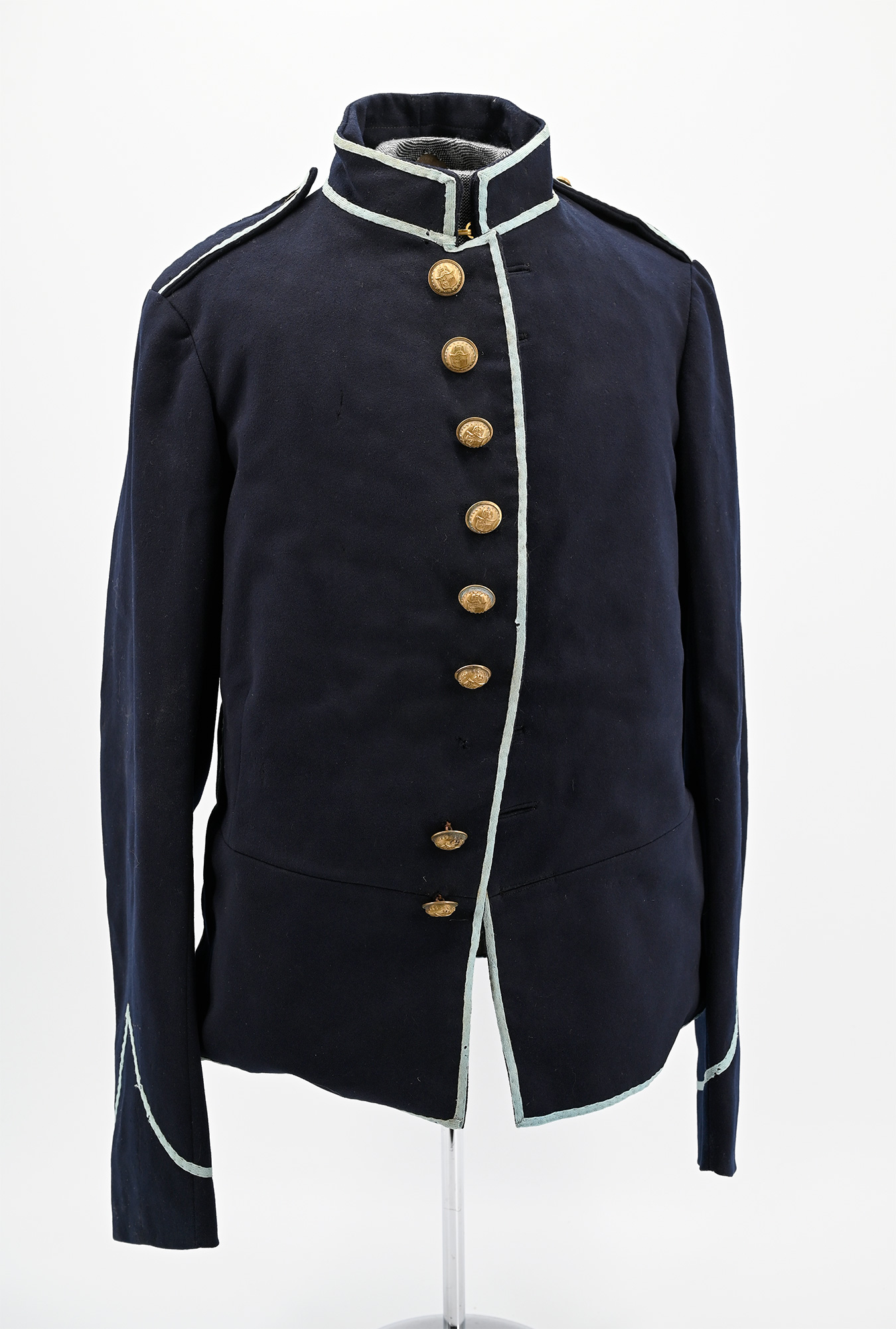
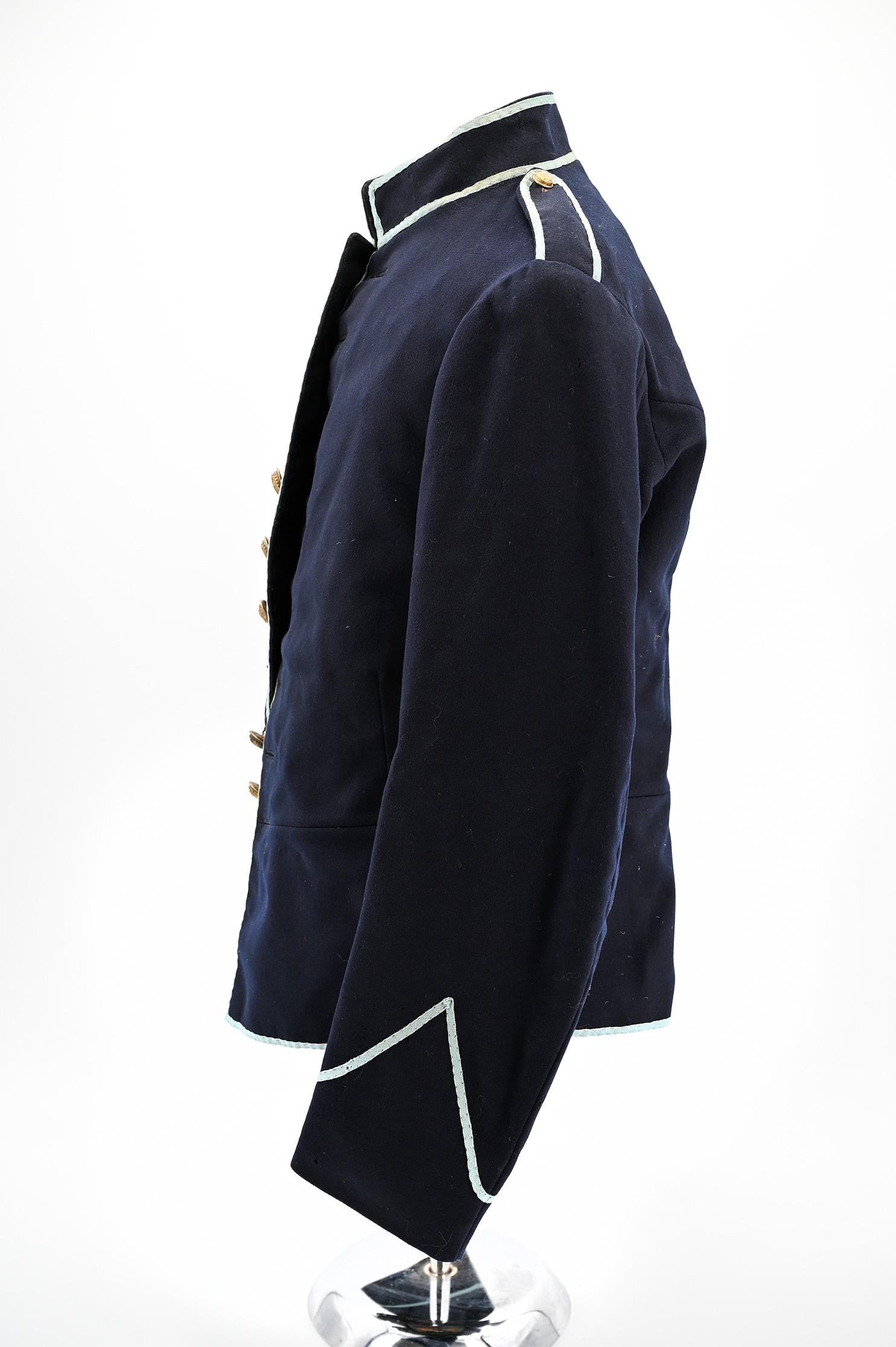
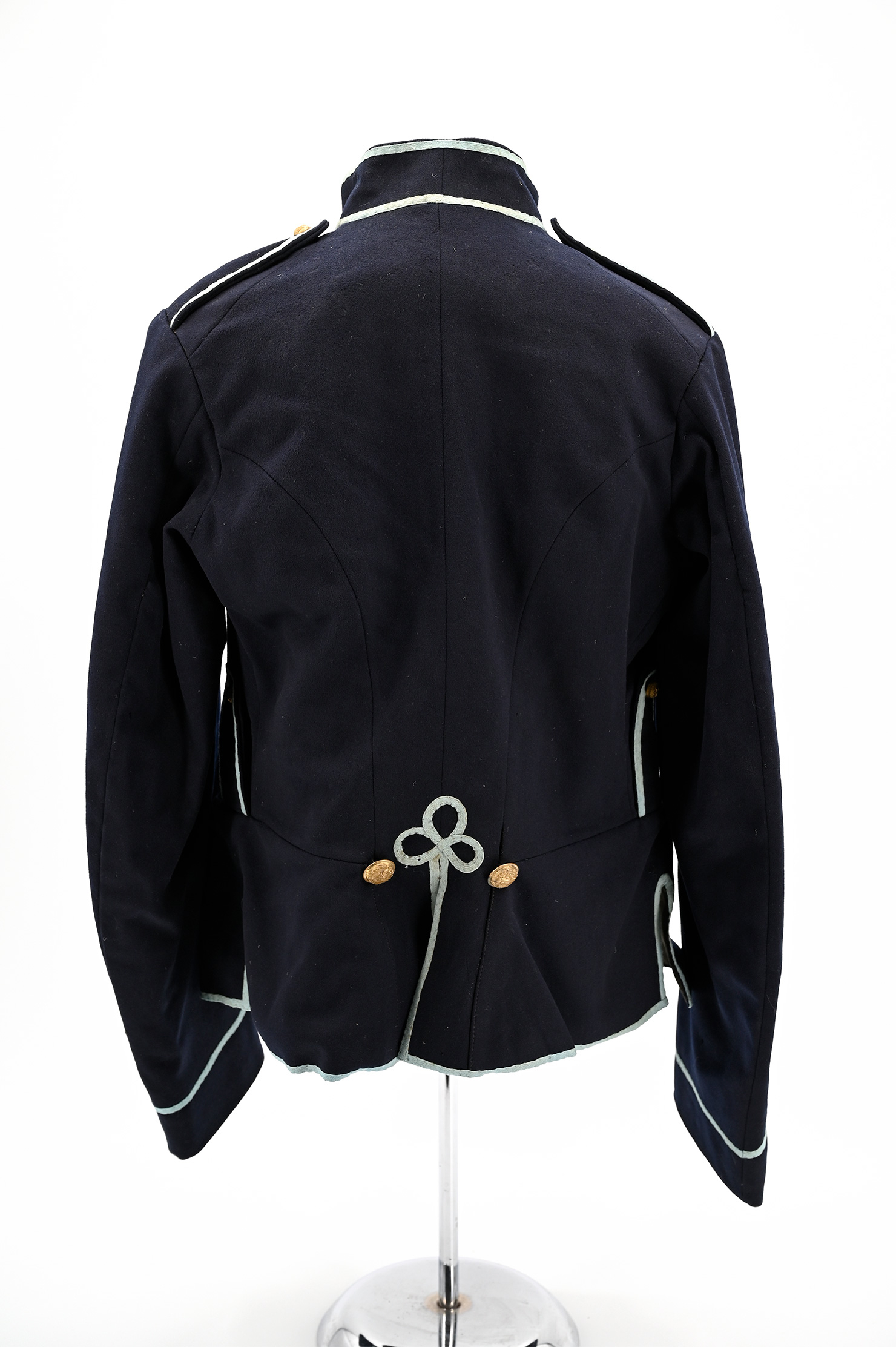
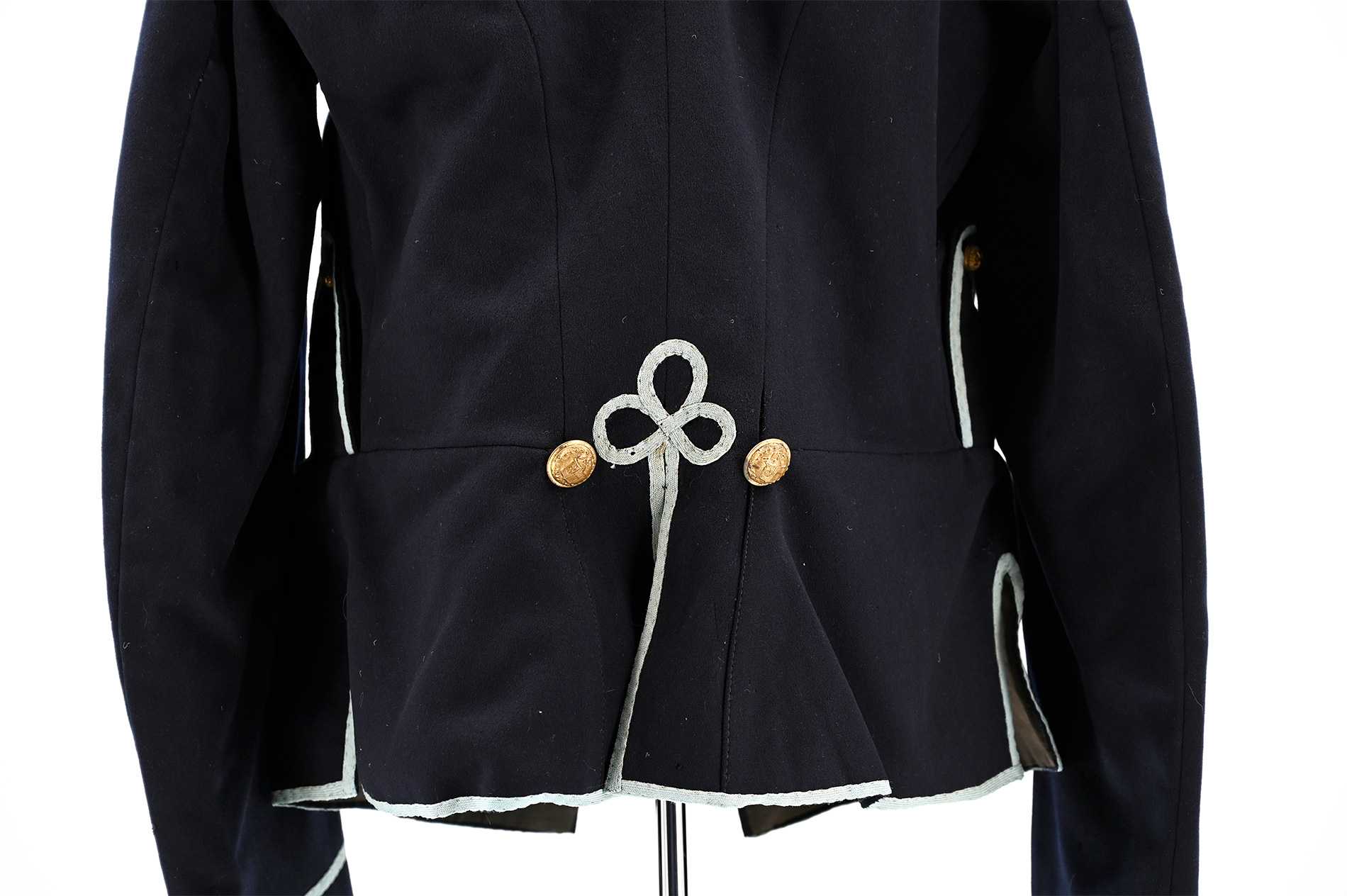
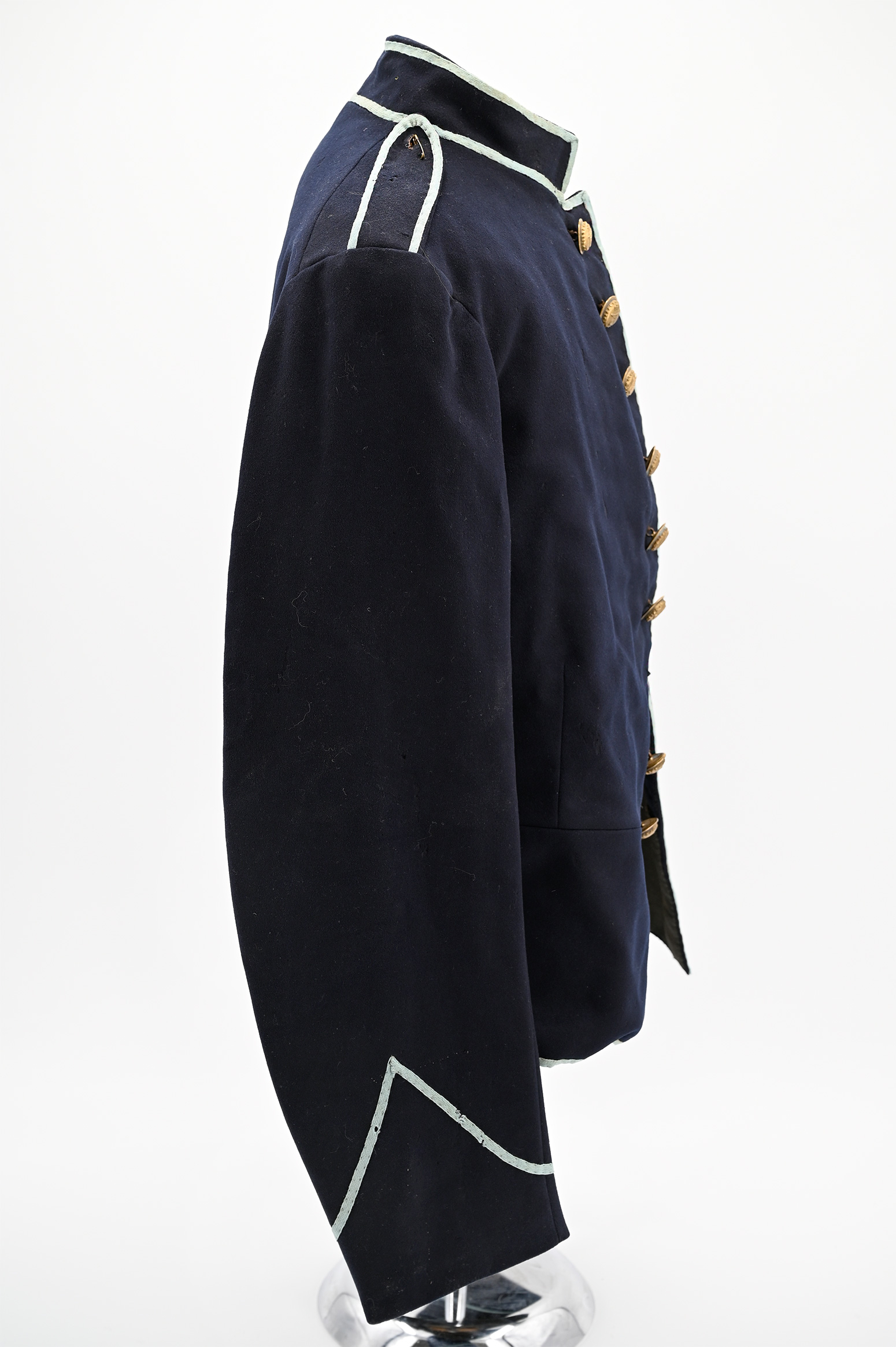
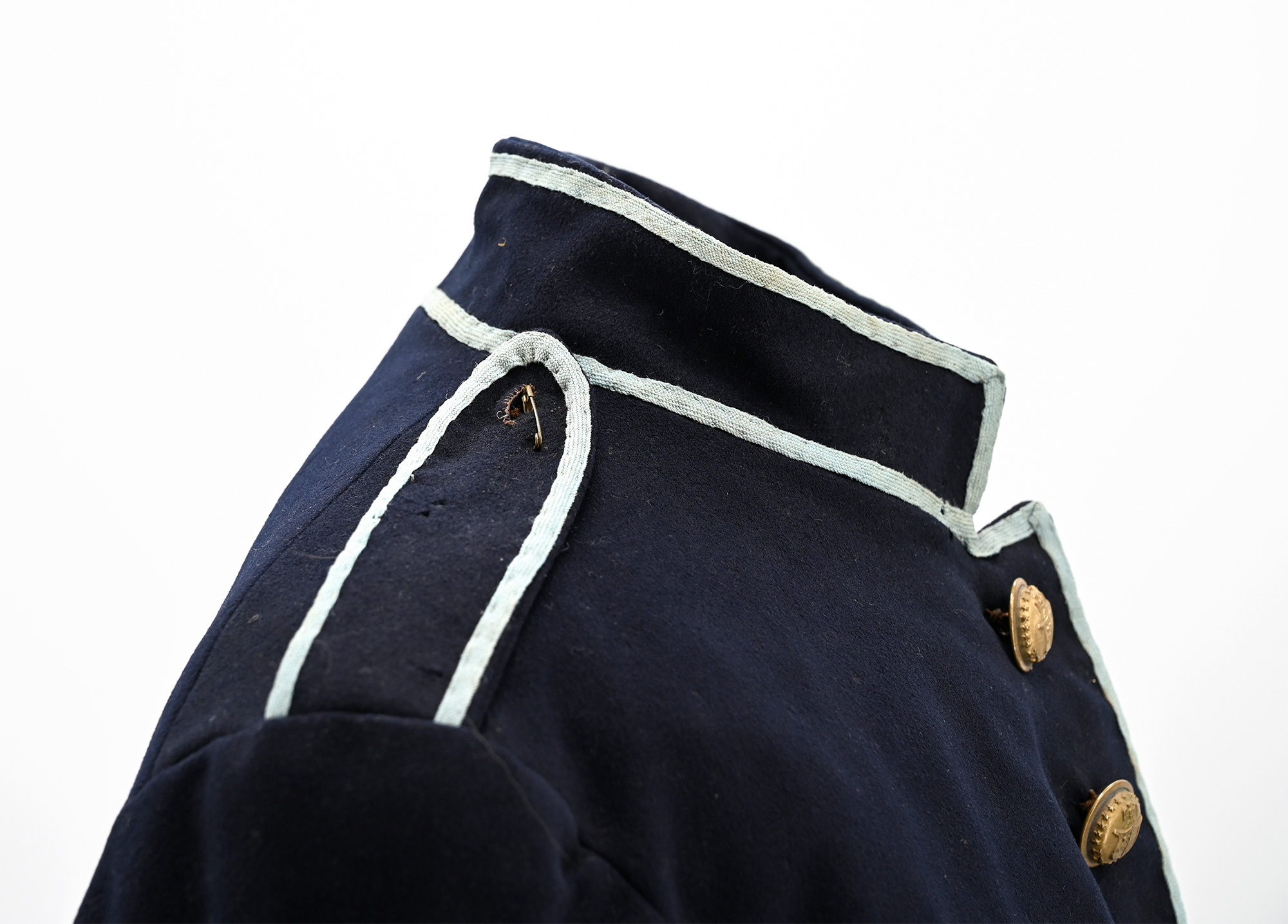
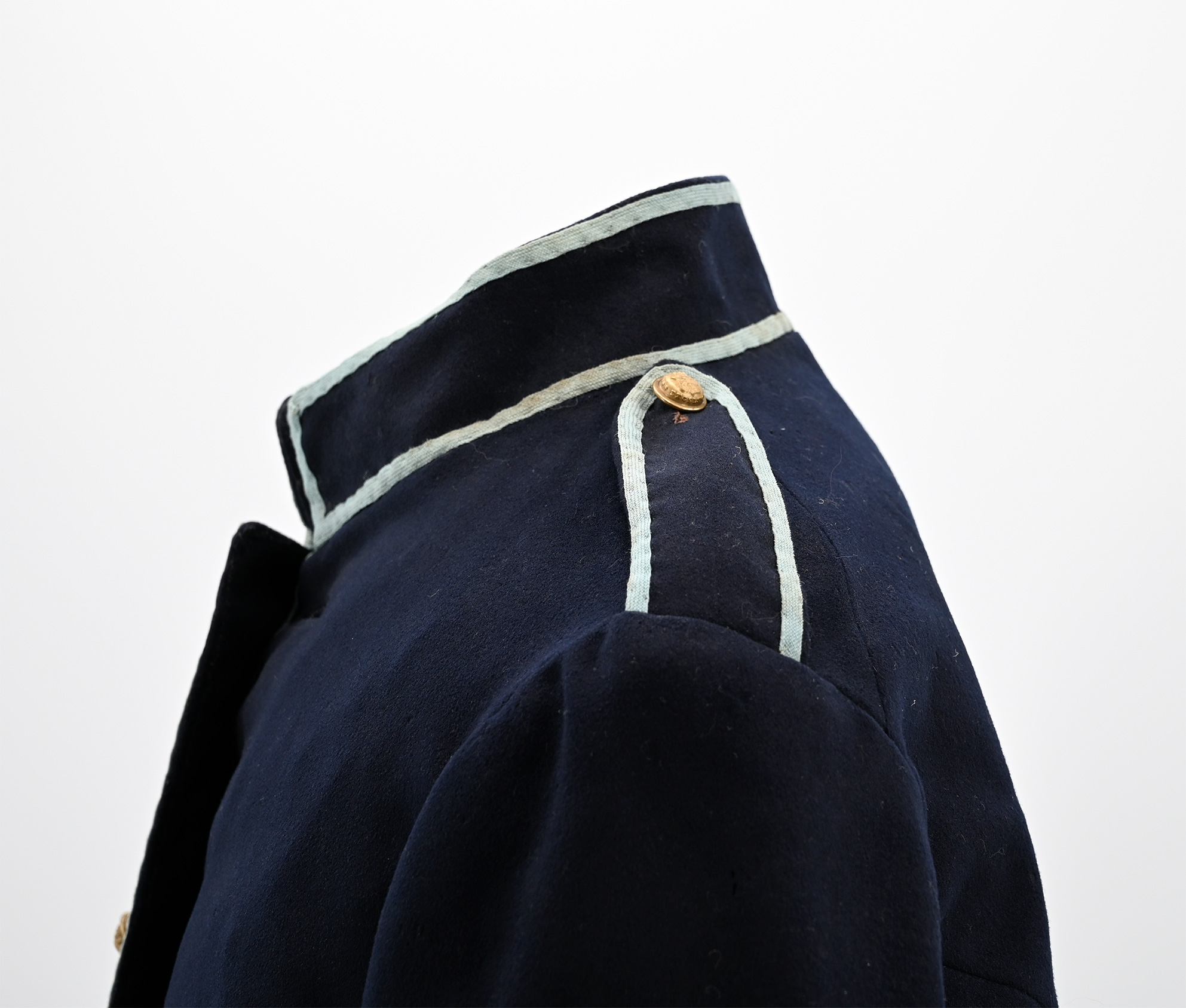
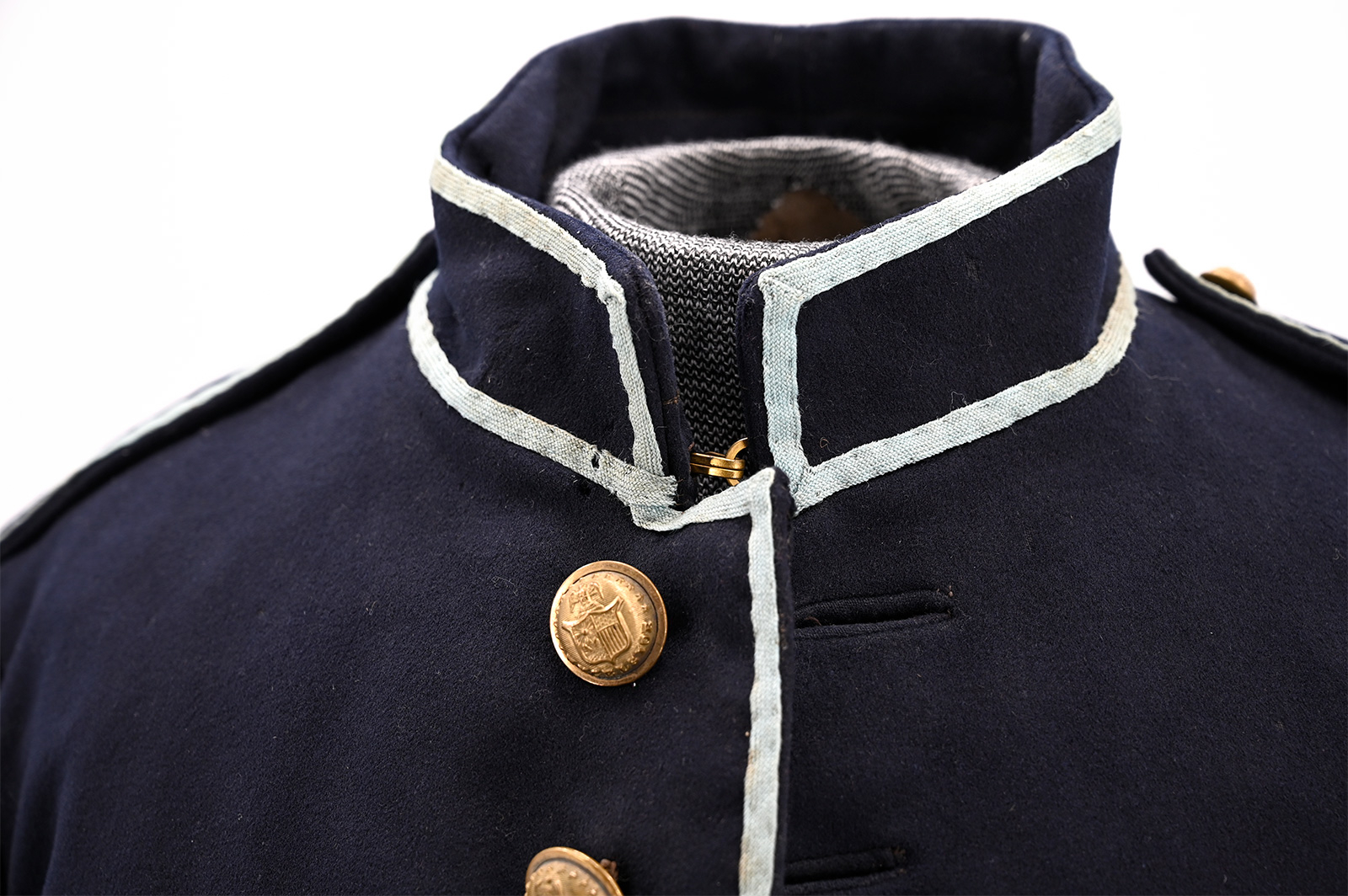
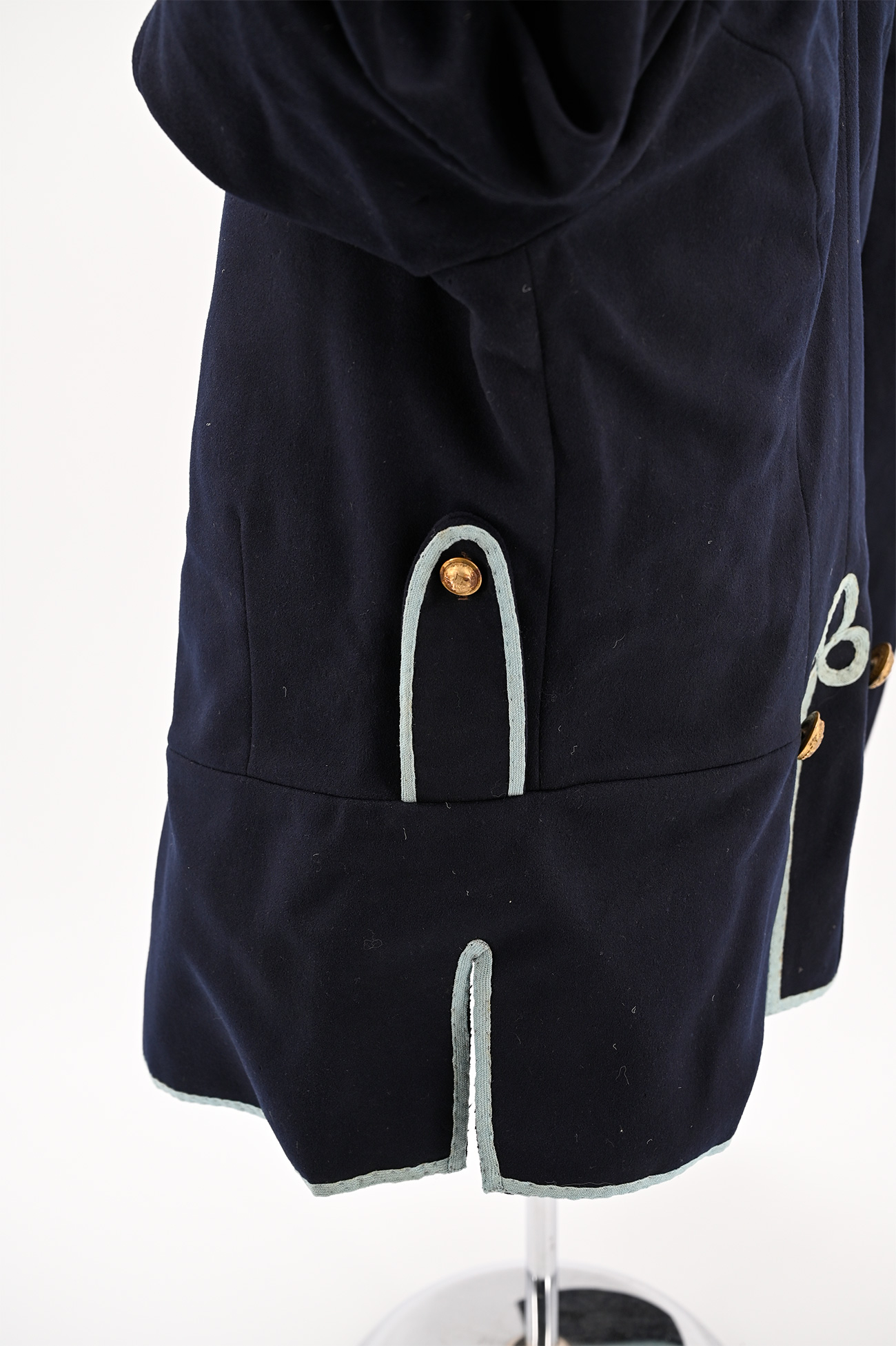
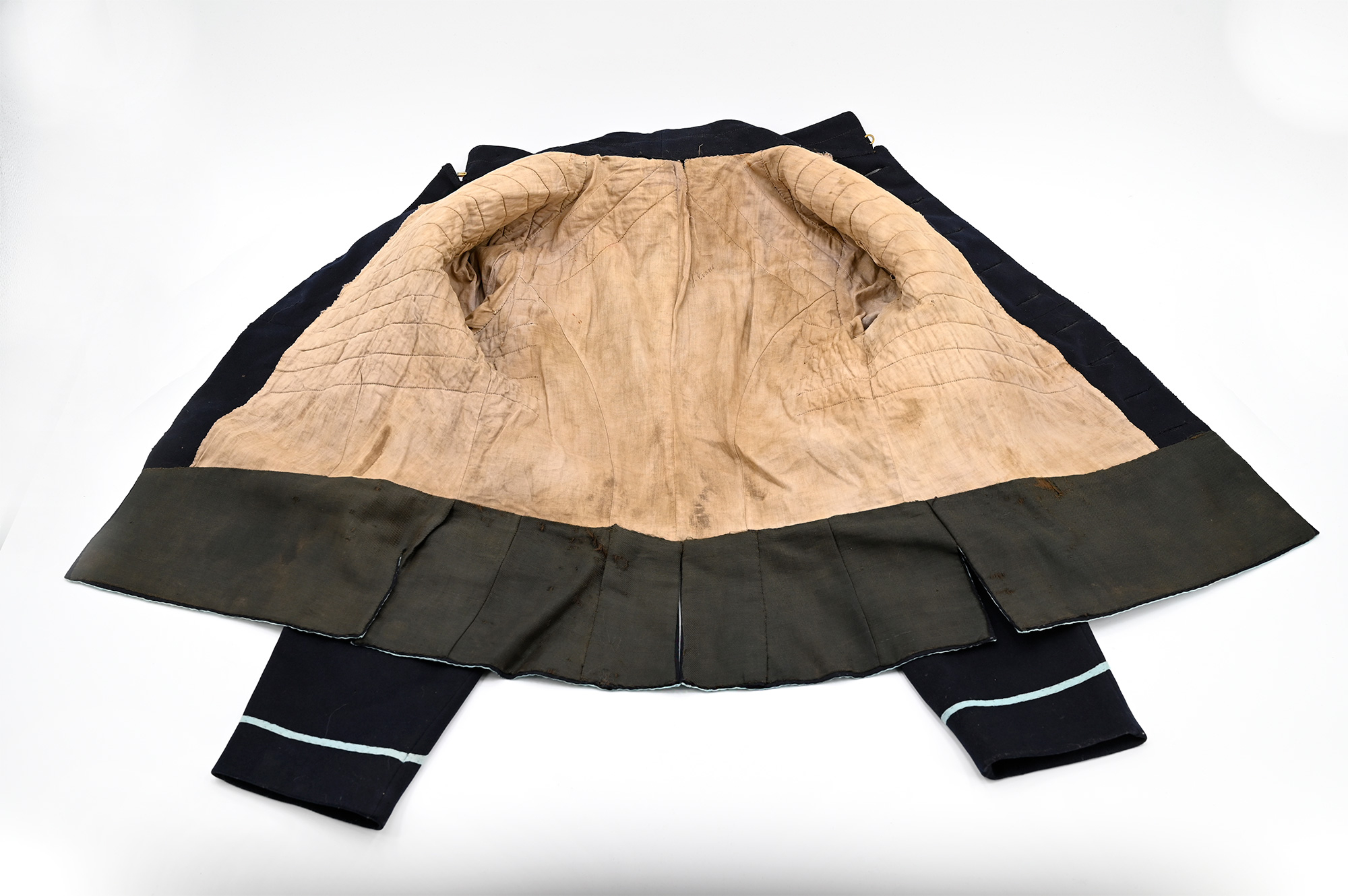
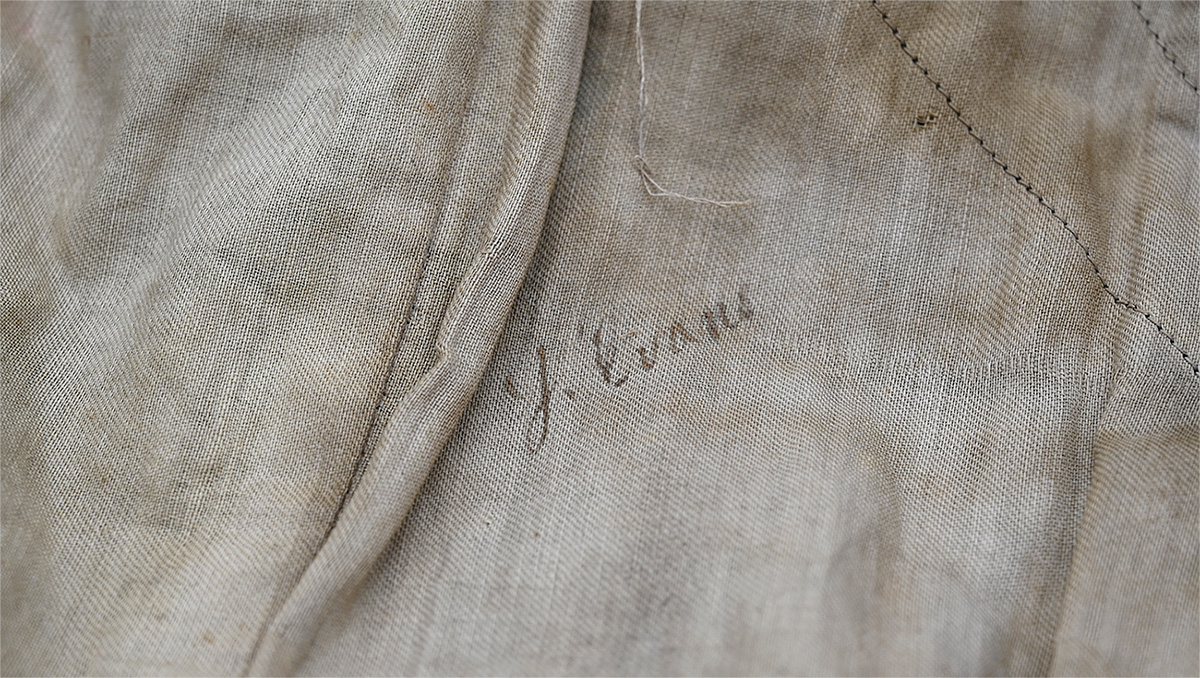
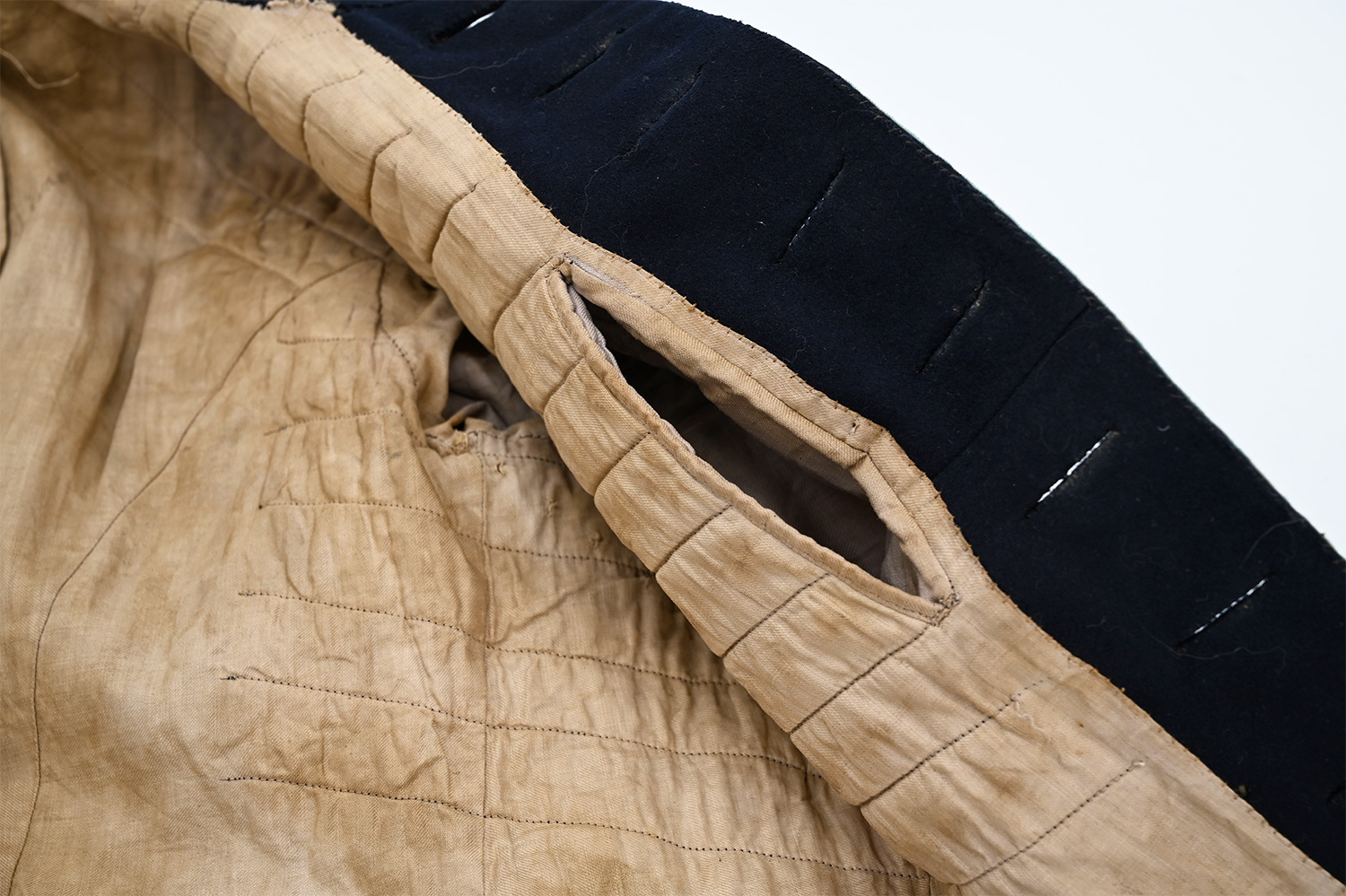
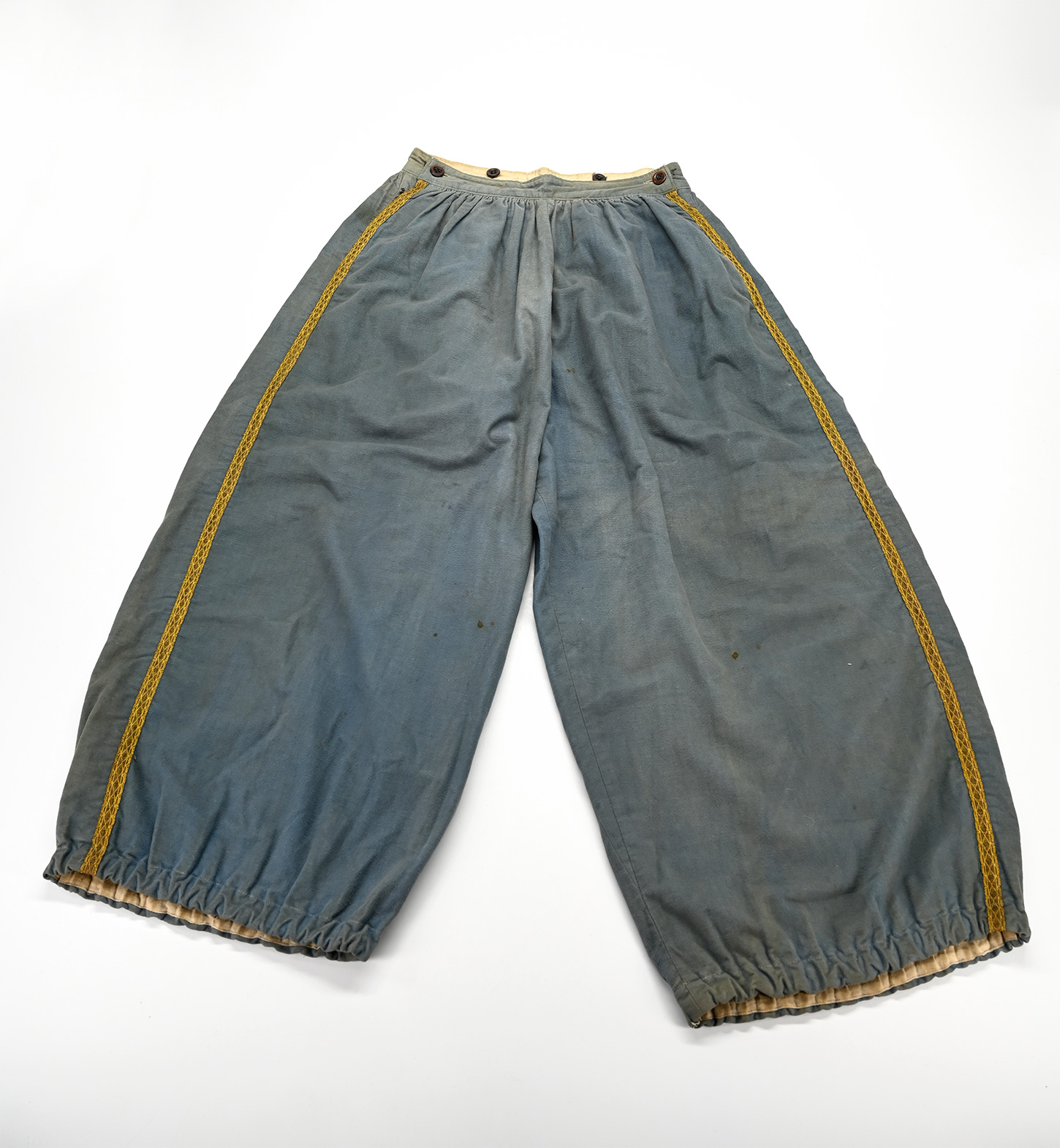
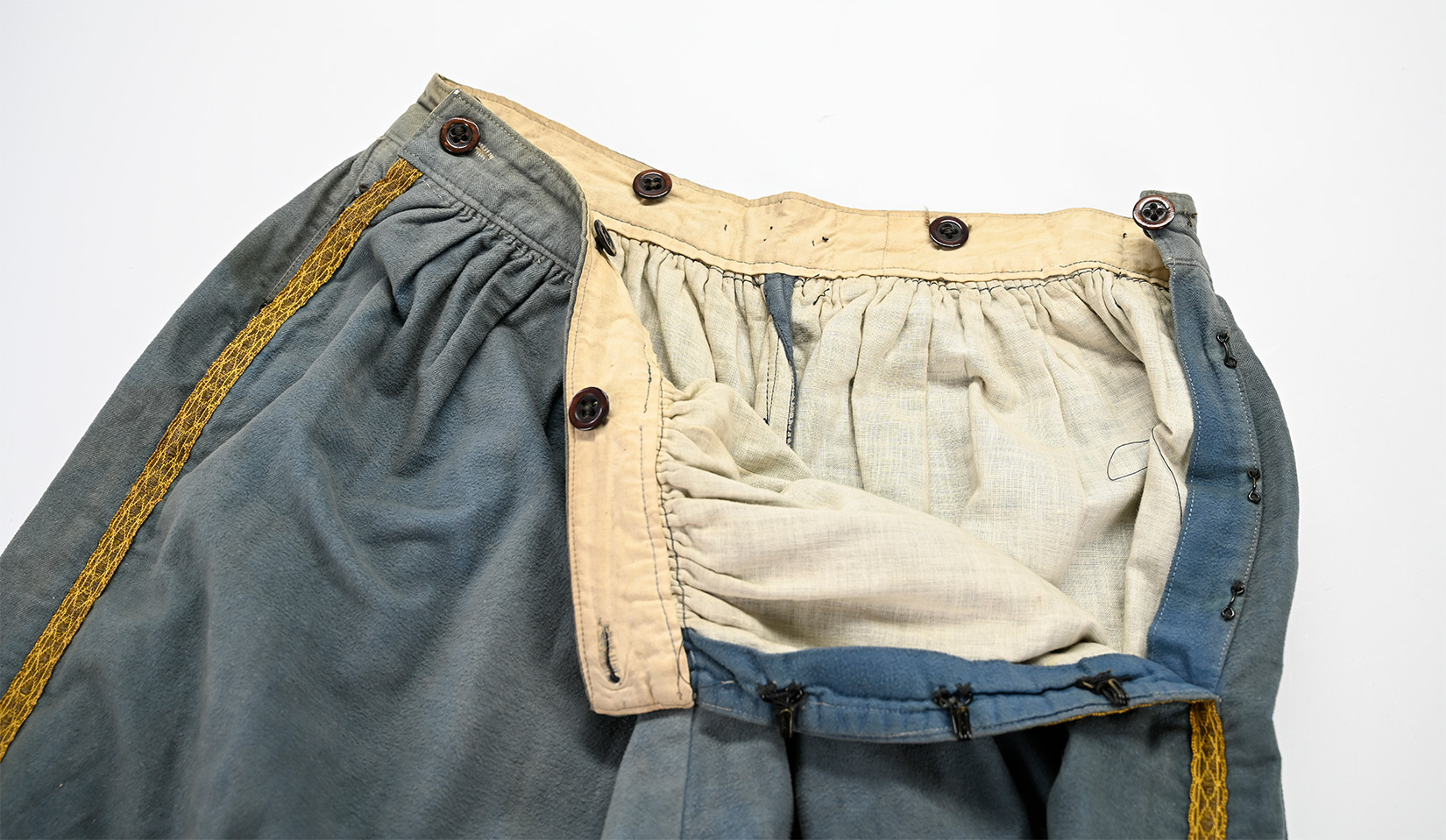
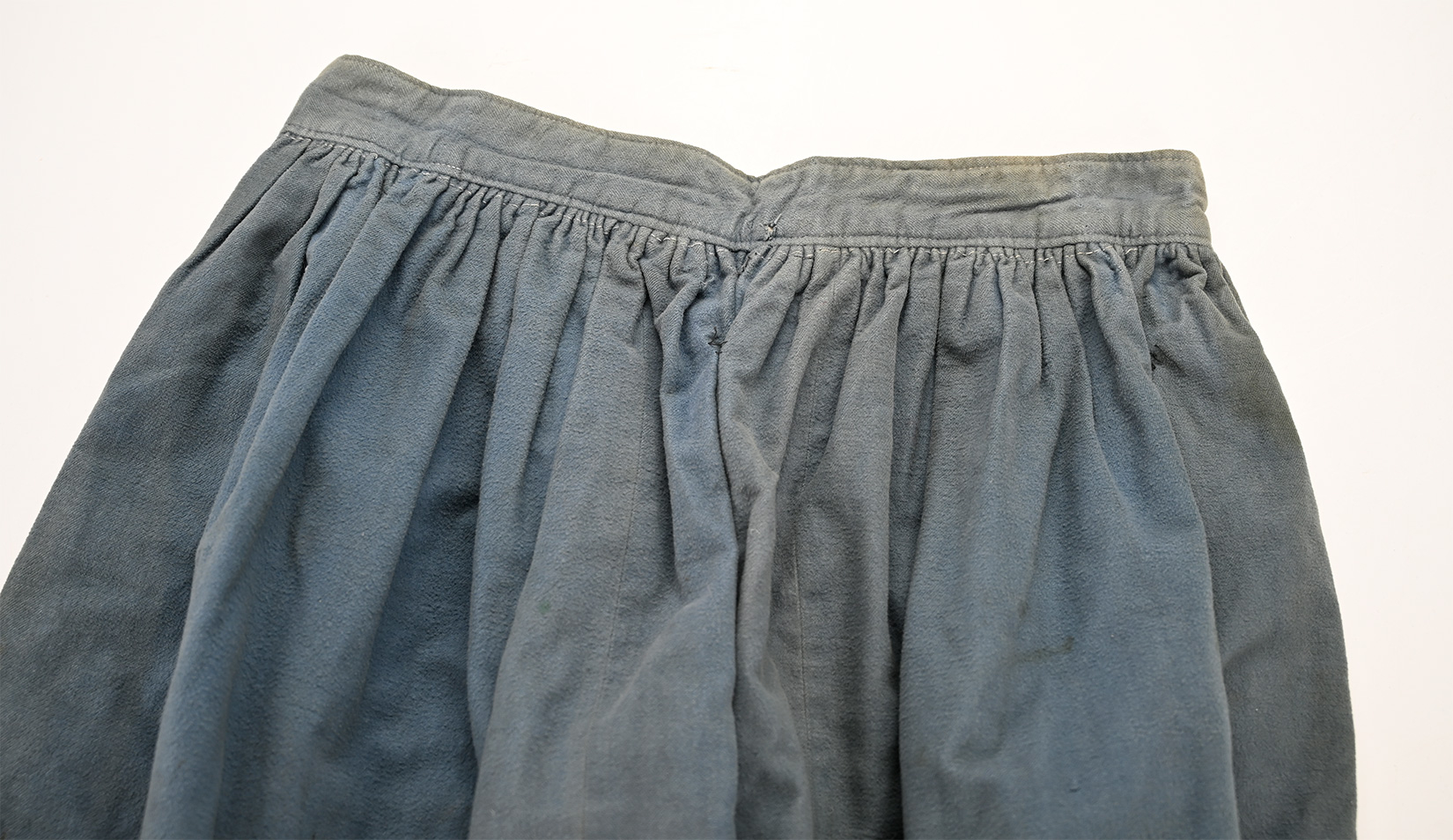
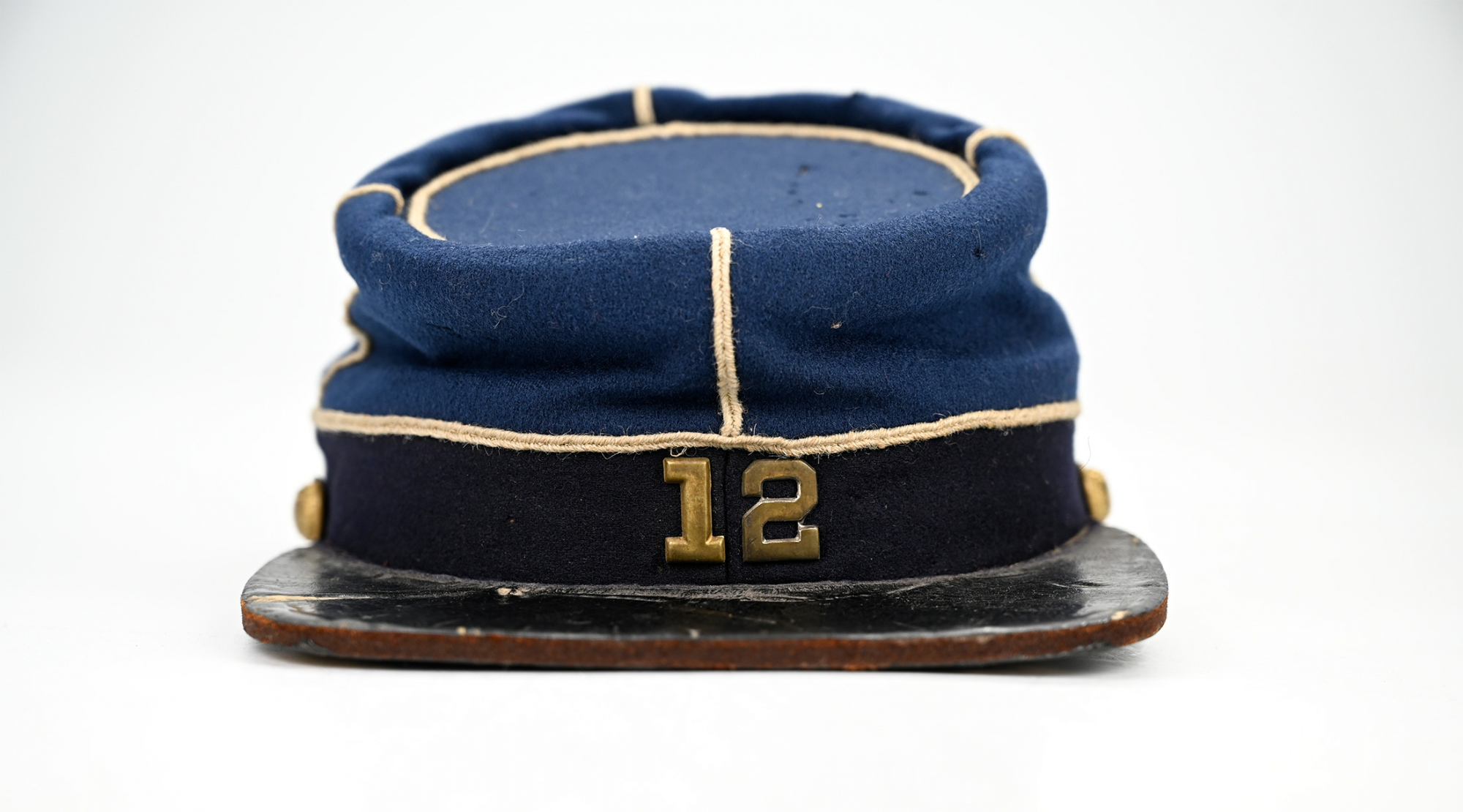
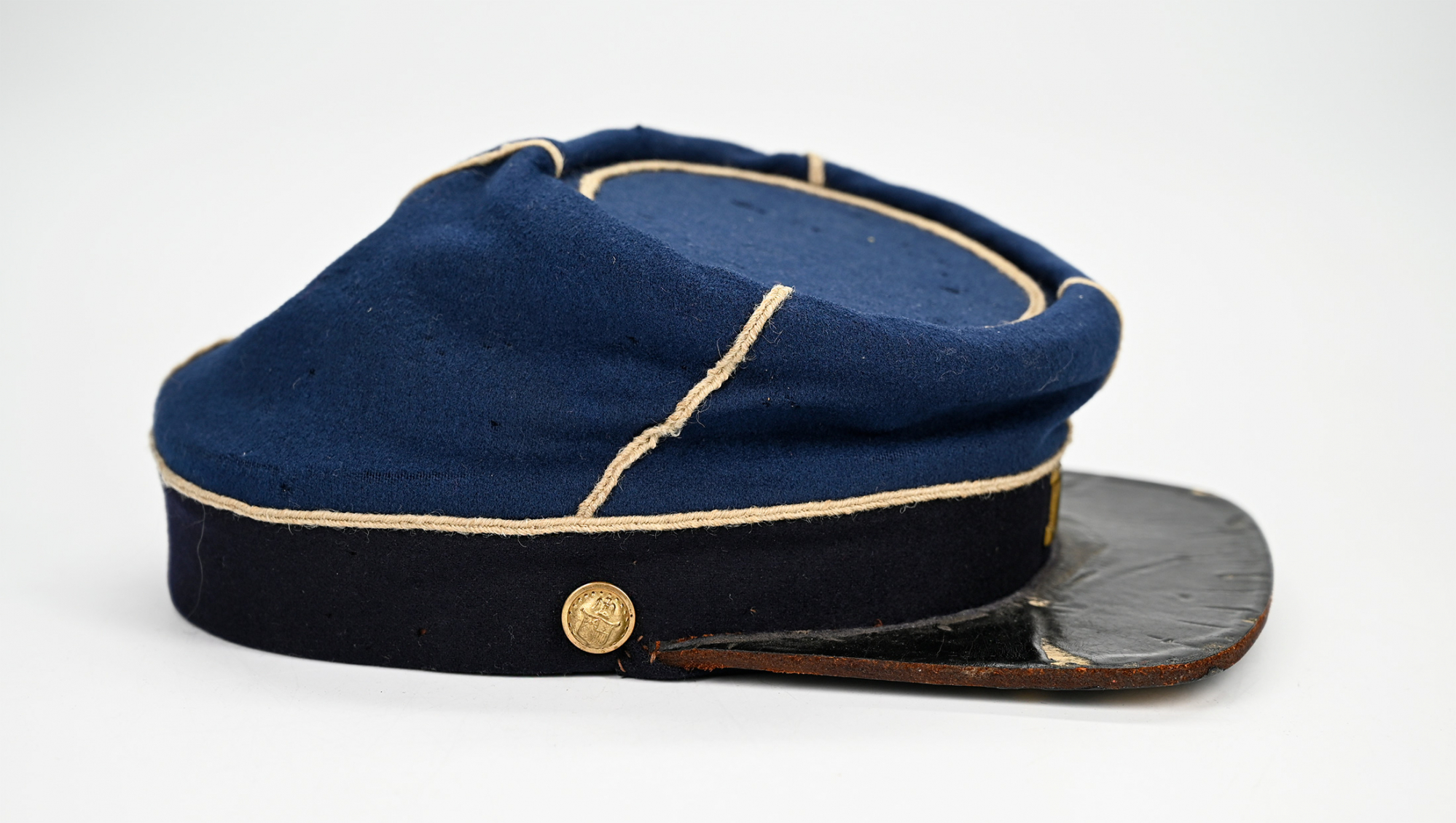
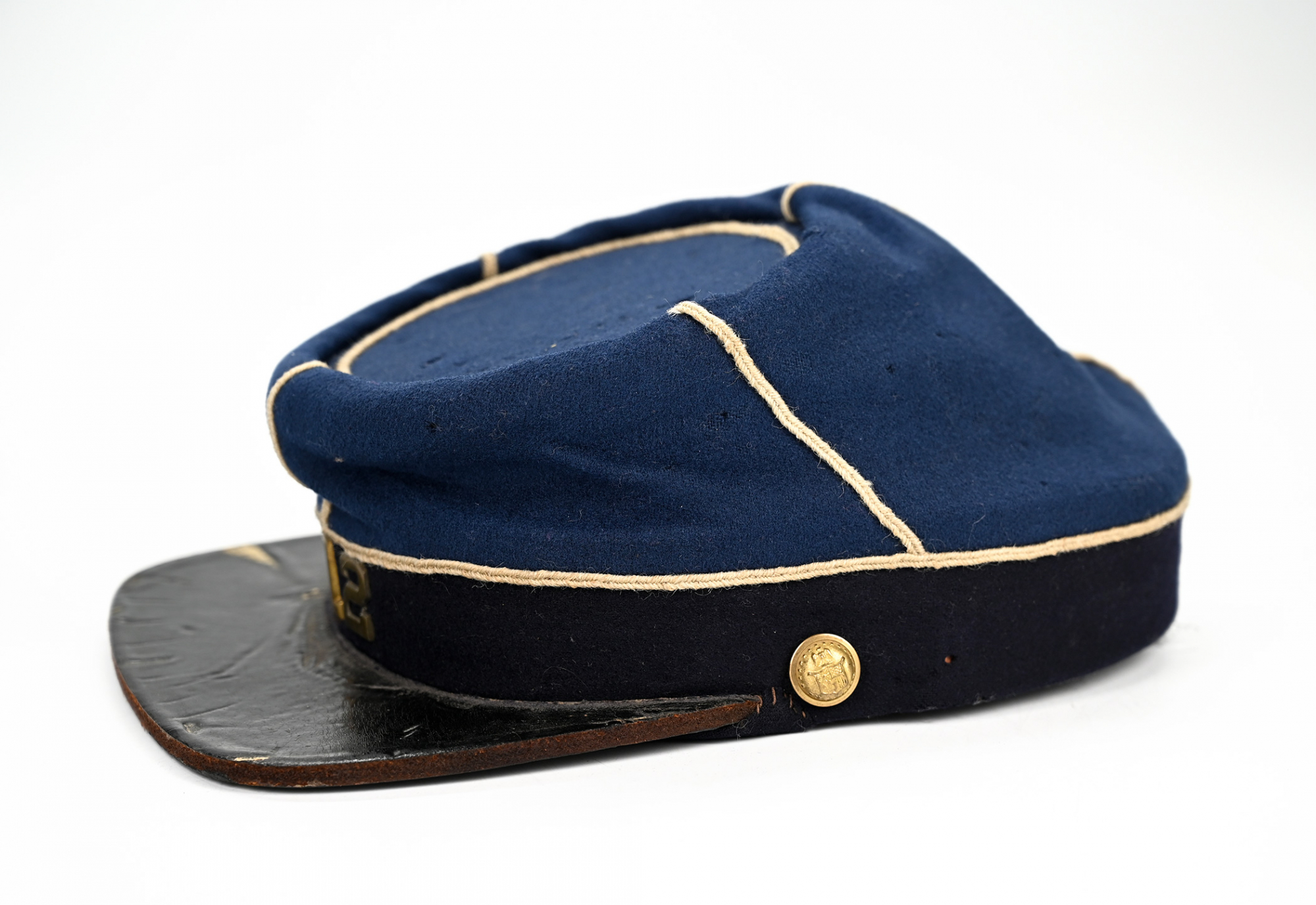
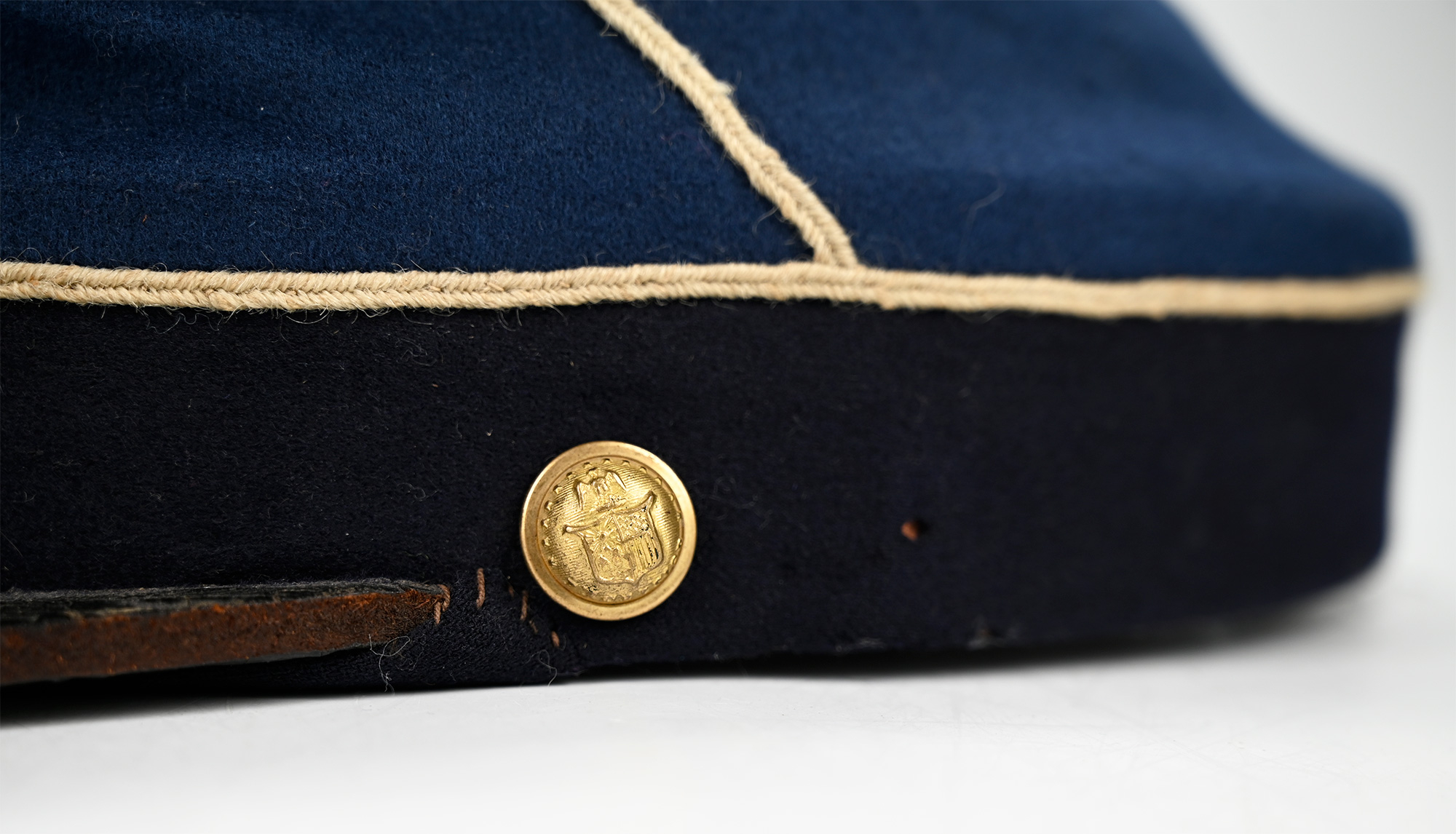
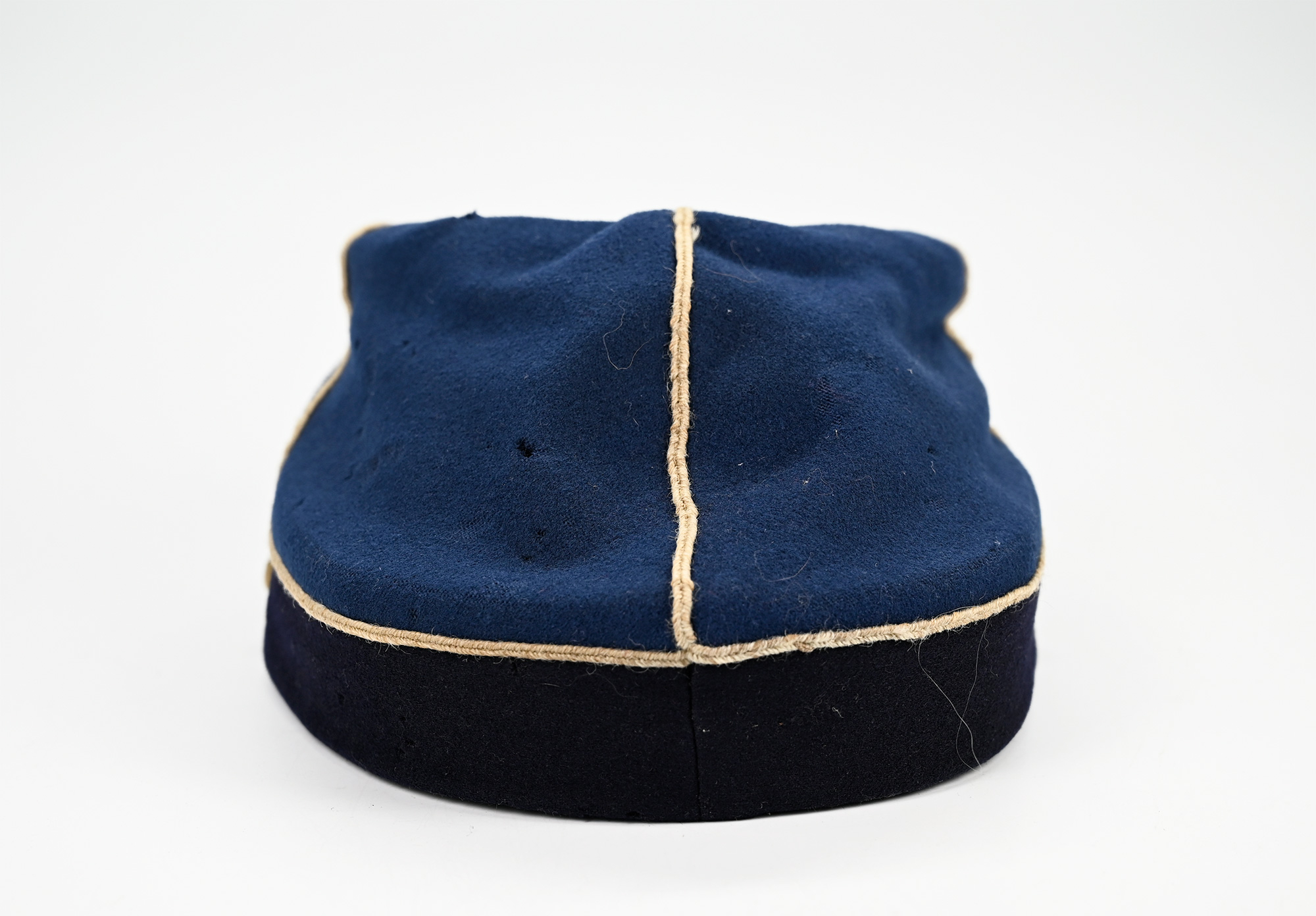
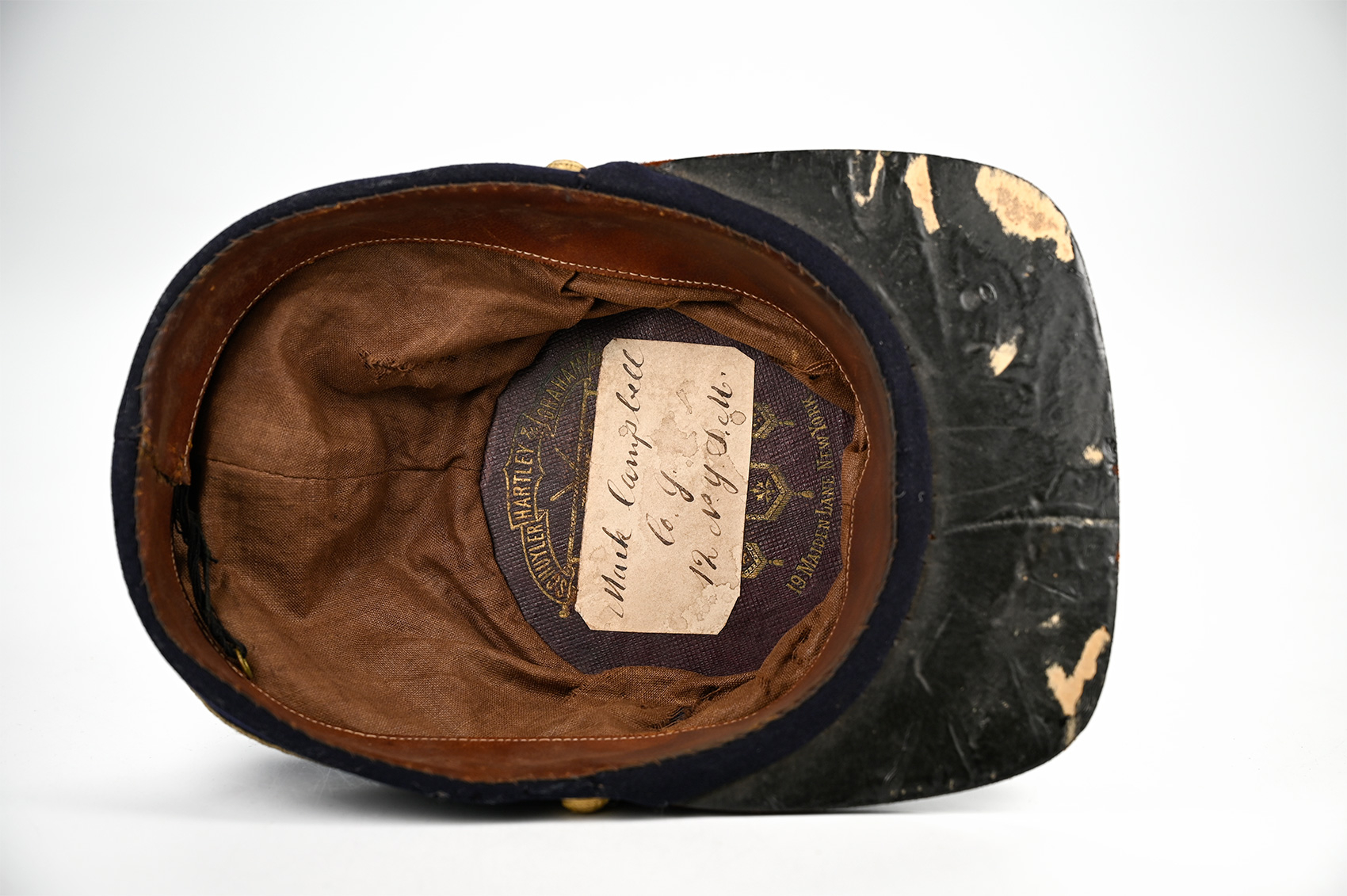
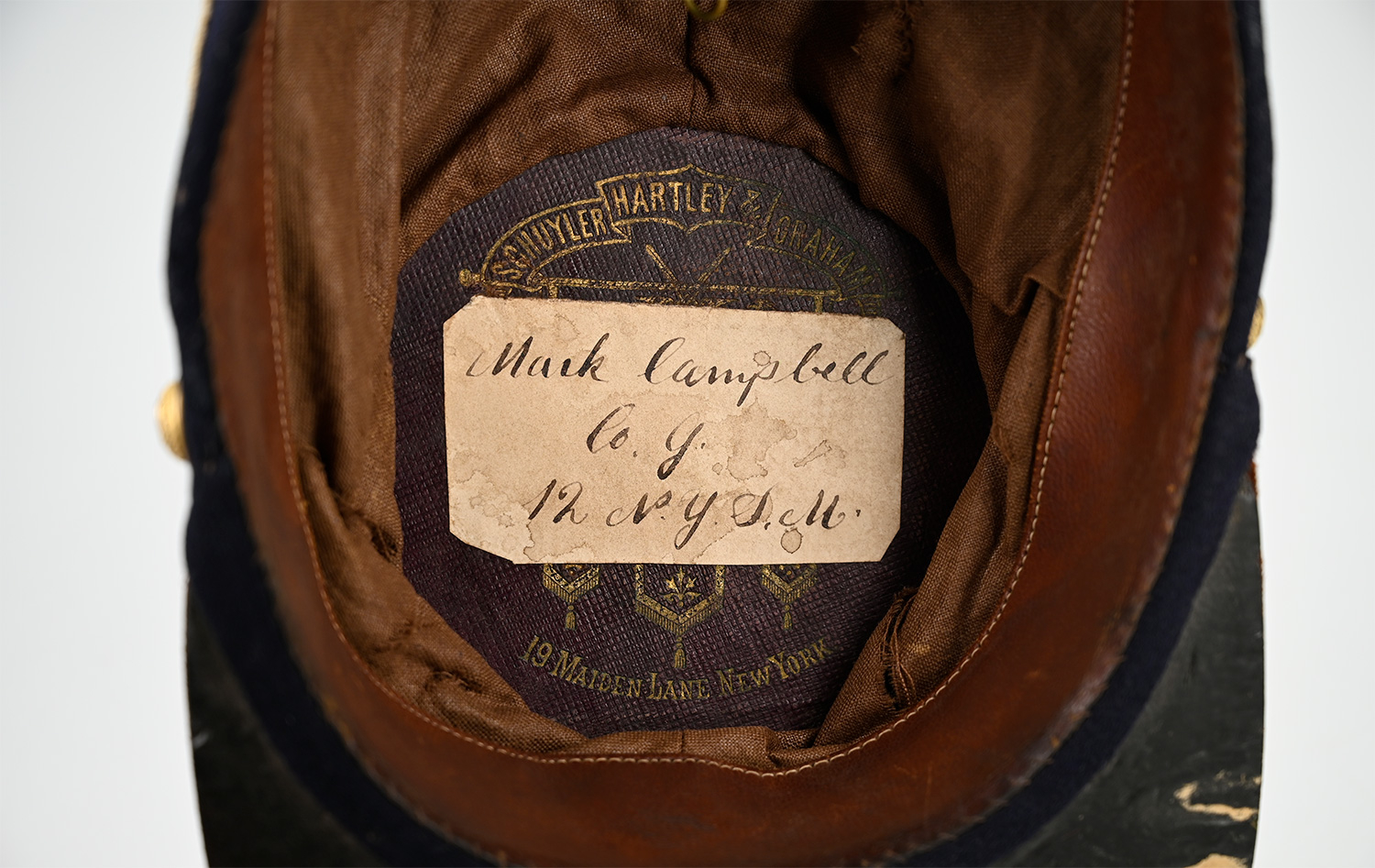
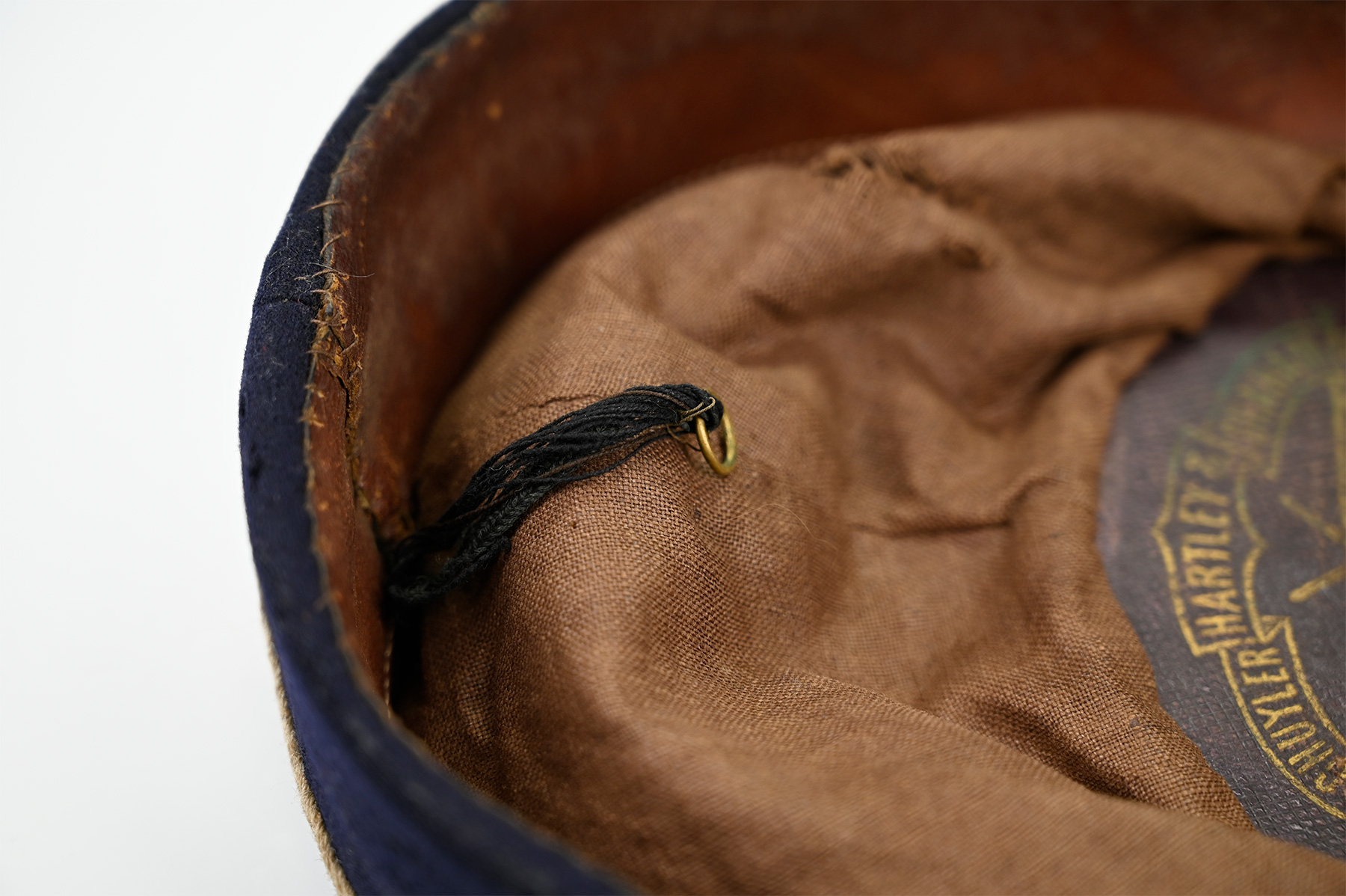
$16,500.00 SOLD
Quantity Available: None
Item Code: 1179-244
This is a scarce chasseur uniform consisting of cap, jacket, and trousers worn by Mark A. Campbell, Co. G, 12th NY State Militia during his three-month service from April to August 1861. The cap bears a completely original brown-ink paper label on the inside, over a Schuyler, Hartley and Graham logo, reading, “Mark Campbell / Co. G / 12 N.Y.S.M.” The regiment numbered just 380 in late 1860. When the war broke out former members brought the total to something over 400, and its ten companies were filled out by new recruits, bringing the total to nearly 1,000. Campbell was likely among the new recruits: he enrolled at age 20 in Company G on April 19 and did not remain in the militia regiment after it mustered out of U.S. service in August.
The regiment had adopted a chasseur uniform the very day news was received of Fort Sumter and friends of the regiment raised $10,000 to pay for them. The regiment left the state on April 21, 1861, with the “regulars” wearing their 1857 pattern uniforms and the new recruits in civilian clothes. They arrived in Washington on April 28 and were formally mustered into U.S. service on May 2. The chasseur uniforms arrived May 9. Campbell’s records are sparse, but he is recorded as drawing, “1 blouse, 1 pr. pants, 1 pr. shoes, 2 pr. stockings, 2 flannel shirts.”
Campbell’s uniform follows Frederick Todd’s description of the 1861-issue chasseur uniform in American Military Equipage (State Forces, p. 1036,) “dark blue jacket edged with light blue; sky blue full pants, russet leather leggings, light blue cap with dark blue band and white cord…” (Some accounts refer to white trim on the jacket and pants, but these seem to be influenced by later versions of the uniform. Their earlier uniform used blue trim and New York used light blue on its M1861 jackets until changing patterns in 1863 and going to white. Todd is very clear on the light blue jacket trim in 1861.) The only element missing is the leggings.
Cap: The cap is a low-crown chasseur style kepi made of medium blue wool with a dark blue band around the base, and white piping around the top the dark blue band, up each side and around the perimeter of the inset top. The chinstrap is missing, but the small NY seal side buttons are in place. The sweatband is complete and in place as is a polished cotton lining running u up the sides to the leatherette underside of the crown, which is embossed Schuyler, Harley & Graham with a 29 Maiden Lane New York address. The central part of the maker’s logo is covered by a clipped cornered rectangle of paper with a great, period brown ink script inscription: “Mark Campbell / Co. G / 12 N.Y.S.M. The rear of the cap has a short cloth loop and small brass hanging ring. There are just some scattered pencil point moth nips to the exterior, some scuff to the flat, unbound, black visor, and two or three short runs to the lining, but no holes. The lower front of the cap has a “12” in separate brass numerals.
Jacket. The jacket is dark blue, polka skirted and piped with a narrow light blue lace around the top, bottom and front edge of the collar, around shoulder tabs, down the nine-button front and around the hem of the skirt, including up and down in the side slits on each side and up the rear slit or vent of the jacket with a trefoil loop at the top of slit, putting it at the lower back. There are two belt loops, one on either side, also trimmed with the light blue lace up the sides and over the rounded top. The collar front has eight of its original nine NY state seal, Extra Quality, buttons in place. The left shoulder tab has a small NY button; the button on the right is missing. The cuffs have a light blue chevron, but do not appear to have had cuff buttons. The belt loops each have a small NY button. The rear vent has a coat size NY button at either side of the top. The interior is quilted in white, with an interior pocket in the left breast. The sleeve linings are white. There is a narrow band of blue fabric inside each cuff bridging the sleeve lining and the turned under cuff, presumably to reduce wear. The skirts are lined in green fabric (perhaps oxidized black.) The color and condition are excellent. There is minor soiling inside, a few small wear spots on the skirt lining, but only the occasional pin or pencil point moth nip or short track.
Pants. The pants are light blue, baggy, but gathered at the waist and cuffs, the latter of which are still fairly large and were intended to be gathered in the top of the leggings, as is shown in period photos of some of the men. They are lined throughout in a thin white cloth and have a fall front rather than fly, with six suspender buttons inside, including two at the front, on the fall, which is secured by three hooks and eyes on each side. There are no pockets. The outer seams are trimmed with a ½ inch wide gold bullion and yellow thread stripe running down each side of the fall front and along the leg. The condition is excellent, with some slight fading and soiling, a little wear to the bullion, one or two small stains, etc. We see just a couple of small wear spots, one small hole, and one short tear to the lining, all inside the cuffs.
Campbell served with the regiment during its entire first term of U.S service, mustering out with it on August 5. It had been ordered south on April 19, the day he enrolled, and left the state on April 21, sailing for Fortress Monroe, but was diverted to Annapolis and went from there to Washington, where it arrived April 28. It was in temporary quarters until May 7 and then posted to “Camp Anderson” in Franklin Square. The men had been drilled on the trip down and were here further drilled in part by recent USMA grads. On May 23 they took crossed the Long Bridge to take part in the occupation of Arlington Heights, claiming to be the first on Virginia soil and taking position at Roach’s Mills, on the left of the army, until returning to Washington. On July 7 it went to join the Army of the Shenandoah, reaching Martinsburg, Va. on the morning of July 10, having covered the last few miles by fording the Potomac and marching all night from Williamsport. There they joined Patterson’s army and were brigaded with the 5th NYSM and the 19th and 28th NYSV. Three companies of the 12th were involved in skirmishing during a foraging expedition in the area on July 12 and the regiment was in a second skirmish a few days later in the advance to Bunker’s Hill. From there it marched to Charlestown on July 17 and took part in the occupation of Harpers Ferry, taking post on Bolivar Heights, with four companies crossing the Shenandoah on flat boats to occupy Loudon Heights on July 26. It evacuated Harpers Ferry with the other U.S. forces on July 28, wading both the Shenandoah and Potomac to rejoin the army. The regiment was ordered back to New York on August 1, and there mustered out on August 5.
Numbers of its veterans ended up in the 12th NY Volunteers and many of those remaining in the militia organization were again mobilized for periods of service in 1862 and 1863, those in 1862 suffering the indignity of being surrendered in the fall of that post in the Antietam campaign.
After mustering out Campbell hoped for a commission in a volunteer regiment and in mid-August joined forces with a Norman Mulley to recruit a company for service in a regiment to be commanded by Daniel Ullman, with the understanding that Mulley would be captain and Campbell his second lieutenant. Campbell personally recruited enough men to reach an agreed quota and keep his side of the bargain, and acted as a recruiting officer and performed other duties at a rendezvous camp in Hempstead, Long Island. The competition among different organizations and officer-hopefuls for recruits, however, caused the cessation of recruiting and consolidation of units in April 1862, placing Ullman and Mulley, and their men, in the 78th NY Vols, and leaving Campbell out. He did not try for active service after that and does not seem to have rejoined the 12th NYSM (which soon adopted the new designation of N.G.S.N.Y.) Campbell’s later life is still unclear, though he shows up in the 1890 veteran census index and in the 1890s was living in Rahway, NJ, and in Brooklyn, while petitioning for an invalid pension, citing his service in the 12th NYSM and his time and money spent in recruiting for what became the 78th NYV.
This is a very scarce early war New York uniform in great condition, with a great personal identification, and involvement in the first rush to save the nation’s capital. [sr][ph:L]
~~~~~~~~~~~~~~~~~~~~~~~~~~~~~~~~~~~
THIS ITEM, AS WITH ALL OTHER ITEMS AVAILABLE ON OUR WEB SITE,
MAY BE PURCHASED THROUGH OUR LAYAWAY PROGRAM.
CLICK HERE FOR OUR POLICIES AND TERMS.
THANK YOU!
Inquire About IDENTIFIED 12th NEW YORK STATE MILITIA UNIFORM: THREE MONTHS SERVICE APRIL TO AUGUST 1861: SKIRMISHES AT MARTINSBURG AND BUNKER’S HILL
Most Popular
Historical Firearms Stolen From The National Civil War Museum In Harrisburg, Pa »
Theft From Gravesite Of Gen. John Reynolds »
Selection Of Unframed Prints By Don Troiani »
Fine Condition Brass Infantry Bugle Insignia »
Large English Bowie Knife With Sheath 1870’S – 1880’S »
Imported (Clauberg) Us Model 1860 Light Cavalry Officer's Saber »
featured item
RARE USN GOSPORT NAVY YARD PRIMING FLASK
Gosport Shipyard was the original name of the facility in Portsmouth, Virginia, that was founded in 1767, passed into the hands of Virginia in the Revolution, was leased from that state by the U.S. government in 1794, purchased by them in 1801 and… (490-6824). Learn More »
site search
Upcoming Events
The shop is currently closed so that we may conduct our annual inventory. We are available by phone… Learn More »


